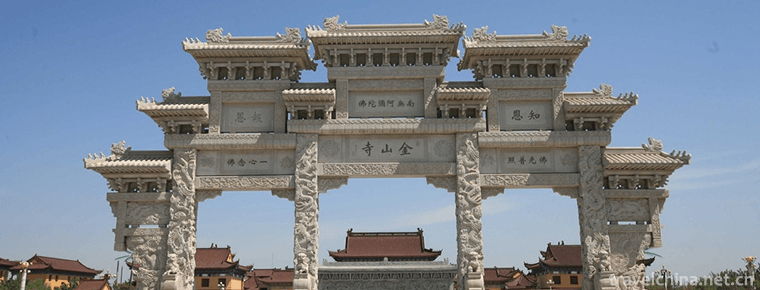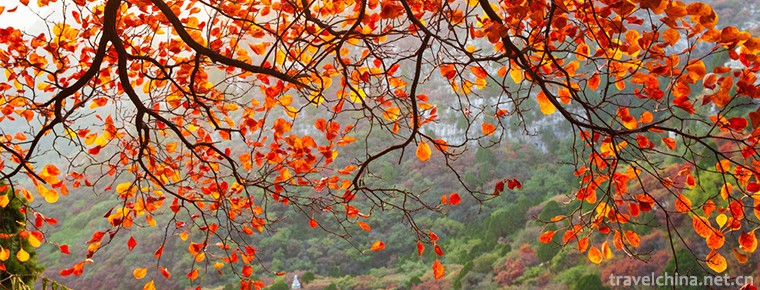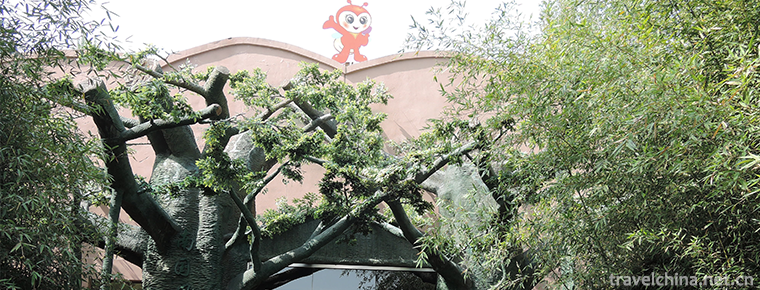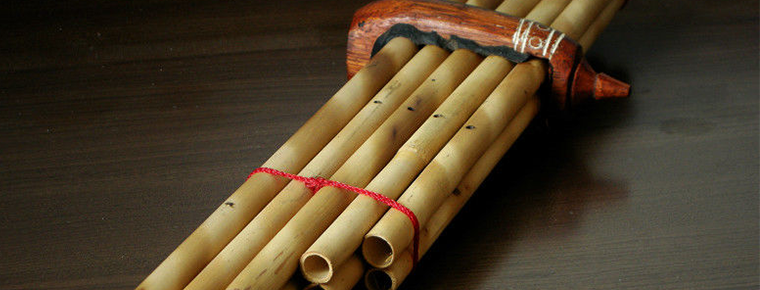Longxing Temple
Longxing Temple
Longxing Temple, alias Dafo Temple, is located in Dongmenli Street, Zhengding County, Shijiazhuang City, Hebei Province. It was originally Longteng Garden of Yanmu Rongxi after the Eastern Jin Dynasty. In 586 A.D. (Sui Wendi's sixth year of emperor Kaihuang), it was rebuilt as Longxing Temple, Tang Dynasty changed into Longxing Temple, and Qing Dynasty into Longxing Temple. It is an early, large-scale and well-preserved Buddhist temple in China. One of the hospitals. The monastery covers an area of 82500 square meters, with more than ten large and small palaces, which are distributed along the central axis of the South and North and on both sides of it. It is an important example of studying the architectural layout of Buddhist monasteries in the Song Dynasty.
Longxing Temple has been approved as AAAA-level tourist attractions in China, the first batch of key cultural relics protection units in China, and one of the top ten famous temples in China.
Architectural evolution
Longxing Temple was originally the Longteng Garden of Yanmu Rongxi in the Sixteen Kingdoms Period of the Eastern Jin Dynasty. In 586, Emperor Wendi of the Sui Dynasty rebuilt the temple in the Garden, which was called Longzang Temple. Tang Dynasty was renamed Longxing Temple.
In the second year of Kaibao in the Northern Song Dynasty (969), Zhao Kuangxu, Taizu of the Song Dynasty, was stationed in Zhenzhou (Houzhengding) after his expedition to the east of Hedong. When he arrived at the Dabei Temple in the west of the city, which was founded by the Tang Dynasty monks consciously, he learned that the original four-Zhang and nine-foot-high bronze-cast Great Sadness Bodhisattva was offered by the monks, that the criminal circles of the Later Han Qidan Dynasty and the later Zhou Dynasty had destroyed Buddha to cast money, and that he had heard the prophecy that the monk Sui ordered that Longxing Temple in the city recast the golden body of the Great Sadness Bodhisattva and build the Great Sadness Pavilion. Kaibao was built in four years (971) and completed in eight years (975). As the main body, the central axis layout was adopted to build and expand, forming a north-south deep, large-scale, momentous building complex of the Song Dynasty.
In the eighth year of Xianfeng in the Qing Dynasty (1858), the pavilion on the west road was occupied by the Catholic Church, and the buildings on the middle and East roads were overwhelmed with pavilions and missing monasteries. Monastery monk days are few, doors and courtyards are cold.
In 1961, the State Council promulgated it as a national key cultural relics protection unit.
architectural composition
The main buildings of Longxing Temple are located in a north-south central axis and its two sides. There is a tall glazed wall in front of the temple. It goes north through the three-way Sankong Shiqiao. The order is: Tianwang Hall, Tianjue Six Division Hall (ruins), Mani Hall, Altar, Cishi Pavilion, Rotary Tibetan Pavilion, Kangxi Imperial Stele Pavilion, Qianlong Imperial Stele Pavilion, Imperial Book Building (ruins), Great Mercy Pavilion, Jiqing Pavilion (ruins) and Mituo Hall. In the northeast corner of the temple wall, there is a Longquan well pavilion. Abbot's House, Yuhua Hall and Xiangxing Zhai on the east side of the monastery are the subsidiary buildings of Longxing Monastery, where the monks and monks used to live.
Main attractions
Imperial Guard
The Altar of Ring is a pavilion-style building. The existing wooden structure was partly rebuilt in the Qing Dynasty. Looking from the outside, there are three stories and four sides of the Altar. On the first floor, there are six pillars on each side. Above the pillars, there is a dome arch structure, which supports the eaves of the Altar. The roof of the Altar is a cusp-shaped roof with four ridges. There are six divine beasts on each ridge. The level of the Altar is still very high.
Two-sided Buddha statues were cast in the altar for the Ming Dynasty bronze. The two Buddhas sit on opposite sides, with their backs connected. To the south, Amitabha, the leader of the Western Paradise World, is the Buddha. To the North sits the Buddha Pharmacist, the world's religion master of Oriental pure glaze. Most of the temples worship the wife of Sakyamuni Buddha or one of his ten disciples. Because your mother-in-law left the precept first, she often worshipped her image in the altar of precepts. The Buddha of Amitabha, the leader of the Western Paradise World, and the Pharmacist Buddha of the Eastern Pure Liulin World are worshipped on the temple altar of Longxing Temple, which is rare in China. In addition, this double-sided bronze Buddha statue has a distinct style of court statues in the mid-Ming Dynasty, which is very rare among the people.
The Altar is a place where Buddhist monks hold religious ceremonies when they receive the Altar. In ancient times, smaller monasteries were not qualified to set up temples. Since the expansion of Longxing Temple in Song Dynasty, the emperors in Song, Yuan, Ming and Qing dynasties ordered it to be rebuilt. It was highly valued and became a famous Buddhist monastery in the north. Therefore, there was a temple. Longxing Temple Altar is one of the three major altars in northern China, the remaining two are in Beijing Altar Temple and Wutaishan Qingliang Temple.
Great mercy Pavilion
Dabeige Pavilion is the main building of Longxing Temple, which is located at the back of the central axis. The Pavilion is 33 meters high, seven wide and five deep, with five eaves and three floors. The old names are "Buddha Fragrance Pavilion" and "Tianning Guanyin Pavilion". According to records, the pavilion was built from 968 to 976 (during the Kaibao period in the early Song Dynasty).
The Great Pessimism Cabinet stands a tall bronze-cast Bodhisattva, known as the Great Pessimism Bodhisattva, 19.2 meters high, standing on a 2.2-meter-high Xumi stone platform. It is the best-preserved and largest bronze-cast Guanyin Bodhisattva statue in China. Like Zhao Kuang-xu, Taizu of the Song Dynasty, he was made by decrees. He has 42 arms around him, also known as "Thousand-Handed and Thousand-Eye Guanyin". Each arm holds the sun and the moon, the bottle, the pagoda, the diamond and the sword. Unfortunately, 40 pairs of copper arms on both sides have been destroyed. They have been replaced by wooden ones. Only the forechest and arms are cast. Avalokitesvara has a self-contained manner, uniform proportion, smooth clothing lines and delicate lines, which is quite in the Song Dynasty art style. According to a Song monument in the temple, its founding procedure is to cast the foundation first, and then cast the Bodhisattva in seven sections. The first section casts the lower lotus pedestal, the second to the knee, the third to the umbilical cord, the fourth to the chest, the fifth to the axilla, the sixth to the shoulder, and the seventh to the head. Finally forty-two arms were added. Bodhisattva's hands are all carved from wood. They are wrapped in cloth, a heavy paint, a heavy cloth, and then pasted with gold foil.
When Dabei Pavilion was rebuilt in 1944 (33 years of the Republic of China), the imperial bookstorey and Jiqing Pavilion on both sides were demolished, and the building area was reduced by one third. The wall sculptures of the Song Dynasty on the east, West and North walls have also disappeared. The cabinet has staircases directly to the top floor, which can provide a panoramic view of Zhengding ancient city. Scholars of all dynasties came to this pavilion and chanted poems, leaving many beautiful poems.
In front of the Great Compassion Pavilion, the runner Tibetan Pavilion (Tibetan Sutra Tower) is on the East side, and the Cishi Pavilion is on the West side. The runner Tibetan Pavilion sits in the west facing east, with three broad sides and four deep sides. It has a double eaves and a hilltop with a square plane. In the middle of the cabinet, there is a wooden "runner hiding" with a diameter of 7 meters and octagonal shape (i.e. turning wardrobe). The two gold pillars in the middle are left and right, and the girder frame structure of the two pillars is made up of curved beams connected with the load-bearing beams by the bending arch of the lower eaves. The upper beams have the application of large oblique columns (fork hands). It is a masterpiece in the early wooden construction. Cishi Pavilion is similar to Runner Tibetan Pavilion in general. The construction of Yongding Pillar and Reducing Pillar is the architectural feature of Cishi Pavilion. Especially the one-week pillars of the eaves are all made of Yongding pillars, which is an isolated example of the preservation of Song Dynasty buildings in China. A wooden statue, seven meters high, stands on the seat of Xumi, two meters high in the cabinet. It is the image of Maitreya Buddha, or "Cishi Bodhisattva", a relic of the Song Dynasty.
No Gate Temple
There is no mountain gate in Longxing Temple. There is only a tall glass wall in front of it. Around the wall, from the third single-hole stone bridge to the north, facing the temple's first building, the Temple of Heavenly Kings, single-eave Xieshan-style, seven sandalwood pillar-style buildings, there is a circular arch gate, the top of the door is embedded in the Kangxi Emperor's letter of "building Longxing Temple" gold plaque, both as a mountain gate.
There are five halls in the center and five in the depth. The central part of the palace is the top of the heavy eaves Xie Mountain, with flowers coming out from the middle of the four sides to hold the building forward, reflecting the characteristics and characteristics of the Song Dynasty architecture. The top of the palace is a green glazed tile trimmed edge, decorated with a large green dome arch under the eaves, with rounded and slightly upward wingspan arc. It is rare in the early Chinese ancient architecture that such three-dimensional courtesy, wealth and silt changes and special shape of ancient buildings. On the Buddhist altar in the middle of the temple, there are statues of Sakyamuni, Manjusri, Puxian, Ananda and Kaye, among which one Buddha (Sakyamuni) and two disciples (Ananda and Kaye) are original statues of the Song Dynasty. The eaves wall and the fan wall around the Buddhist altar are painted with murals drawn during Chenghua period of Ming Dynasty, with the theme of Buddhist stories. The murals are colourful and smooth. There are exquisite Xumi Mountain on the back of the fan wall and Luohan, Lion and Elephant in the mountains. In the middle, there is a Ming Dynasty painted Guanyin sitting statue, with a crown on its head, a ribbon on its shoulders, bare breasts and arms, one foot on lotus, one foot on the ground, two hands touching knees. The nose is slightly high, the willow leaves are thin eyebrows, the face is quiet and quiet, and the posture is elegant and dignified.
Hall of Heavenly Kings
On the door of the Temple of Heavenly Kings hangs a gold-lettered plaque written by Emperor Kangxi, "Rongjian Longxing Temple". On the wall around the Temple of Heaven, there are "rich peony" carved with glazed bricks. To the south of the Temple of Heavenly Kings is a magnificent double dragon wall. The wall is 22.9 meters long, 6.8 meters high and 1.2 meters thick. The top and sides of the wall are inlaid with green glazed tiles. The cap and ridge are decorated with birds and animals. The front and back centers of the wall are diamond-shaped, with green glazed relief Erlong opera beads in the middle, and the whole wall of the relief is bright red.
There are two vivid dragons in the wall. Legend has it that the Hutuo River in the south of Zhengding City has a deep current and no bridge in its early years. It was inconvenient to cross the river. After that, two chains were cast to tie the wooden piles on both sides of the river to benefit the pedestrian ferry. Over the years, the chains became two green dragons, harming the people, and were captured by Zhang Tianshi. At this time, when Lieutenant Chi Jingde supervised the construction of the Great Buddhist Temple, he forgot to build the Mountain Gate of the Great Buddhist Temple, and was worried that he could not make the difference. So they let the craftsmen work overnight to build this wall in front of the Dafo Temple and firmly embedded the Erlong in the middle, so that the town locked Jiaolong so that it could not do evil, and secondly hide the embarrassment of the Dafo Temple without a mountain gate.
Mani Hall
Mani Hall is one of the main buildings of the temple. It is located in the front of the central axis. It was built in 1052 A.D. (Four Years of Emperor Renzong of Song Dynasty). Its total area is 1400 square meters. The structure of the hall is a beam-lifting wooden structure with a cross-shaped plane. The Liangjia structure in the hall is consistent with the Song Dynasty's "Creating French Style". There are eight rafters in big wood and four columns in breast truss. Mani is Sanskrit, meaning jewelry and treasure. The Buddhist Sutra says, "Manizhu, if you throw in turbid water, the water will be clear." This is the name of Mani Temple, which is used to remove turbidity, remove dust and prove the meaning of quiet. In the Mani Temple, Sakyamuni is offered. The plane layout is cross-shaped, with seven broad faces and six near-deep ones. It is 33.32 metres long and 27.08 metres wide. It has a roof with green glazed tiles. Different from the common double eaves building, the outer wall is built under the sub-eaves, and in the middle of the four sides of the sub-eaves, a hill-facing Xieshan Peak Building is added, which is called "Turtle House" in the Song Dynasty.
On the walls of the South side, the statues of Sakyamuni and Kaye of the Song Dynasty, the second disciples of Ananda and Ming Dynasty are decorated with ornamental jewels, and the flying ribbons are decorated with statues of Manjusri and Puxian Bodhisattva. On both sides of the East and west sides and around the hall, except for the "twelve Yuanjue Bodhisattvas" and "eight Bodhisattvas" painted on the inner walls of the eastern and western sides of the inner wall of the inner channel in the Qing Dynasty, all the other paintings were painted during the Chenghua Period of the Ming Dynasty, and the four hubs were painted with the Buddhist God "Twenty-four Heavens"; the inner walls of the eaves adopted the layout of "divisions and panorama", depicting the descent of Sakyamuni, tragedy, ascension, road, Nirvana plate. The whole process. The inner groove and the outer wall of the eastern and Western fan walls are respectively painted with "Western Scenic Spot" and "Eastern Clean Glass World". The length of the picture is 9.36 meters and the height is 7 meters. The composition is magnificent. The well-preserved "Western Scenic Spot" depicts more than 400 Buddhas, Bodhisattvas, Arhats, musical artists and saints centered on the three saints of the West, Mita, Guanyin and the general situation.
To the north of Mani Hall is a wooden archway gate. Because Longxing Temple is deep in the north and south, and the courtyard overlaps, this archway should be the entrance between the front and back courtyards. Out of the north gate of Mani Hall, there is a small wooden archway. On each side of Yongdao, there is a locust tree with a longevity of more than 1,600 years, one is the Dragon locust and the other is the Phoenix locust.
Legend has it that at the end of the Western Han Dynasty, a wealthy lady in Zhengding City was in love with a young longtime worker in her family. In the feudal society at that time, it was not difficult to guess the aftermath: the parents of the young lady firmly opposed it and wanted to fight the Mandarin ducks. They made an appointment and ran away. On the way, they were chased by their families. There was nowhere to escape. They pledged to each other that they would like to be a birdbird in heaven and a branch in heaven. After that, it turned into two locust trees right here. Several years later, Emperor Liu Xiu of Hanguang Wudi came to Zhengding and was deeply moved to see the tree. He was named Dragon and Phoenix Sophora. Later generations also called it husband and wife tree and marriage tree. The crowns of these ancient locust trees are connected in the air, the roots are twined in the ground, the leaves are sparse when the national transportation is in decline, and the leaves are luxuriant when the national transportation is prosperous. People perceive the spirituality of Robinia pseudoacacia. If they circle three turns around the tree, they believe there will be blessings.
Runner Pavilion
Runner Tibetan Pavilion was built in the Northern Song Dynasty. The girder structure is very special. Because of the placement of runner hiding in the upper floors, the column network layout breaks through the Convention and adopts the method of shifting columns, while the eave column adopts the method of inserting columns, which is very rare in ancient Chinese architecture. The cabinet's wooden wheel hiding is a large rotating bookshelf with a diameter of 7 meters. It is divided into three parts: the hiding seat, the hiding shelter and the hiding roof. A 10.8-meter wooden shaft runs through the middle. The weight of the whole wheel storage is borne by the bottom needle. Running wheel Tibet was built in the Northern Song Dynasty. It is the earliest and the largest one in China.
Protection of cultural relics
From the second half of 1977 to the end of 1980, the Mani Hall was rebuilt.
From 1982 to 1985, the abbot's house of Longxing Temple, the Temple of Heavenly King, the Altar of Righteousness and the Temple of Mituo were renovated and painted, and a parking lot was built;
In March 2014, the renovation project of the Temple of Heavenly Kings began; in addition, the current renovation project of the Pilu Temple of Longxing Temple has been approved, and the project is to be commissioned by Shanxi Ancient Building Institute in accordance with legal procedures. The mural protection and maintenance project has been completed by Dunhuang Research Institute and submitted to the State Administration of Cultural Relics for approval;
On February 11, 2015, Liang Sicheng's Heritage Preservation Historic Exhibition opened at Longxing Temple in Zhengding.
Value of cultural relics
Longxing Temple in Zhengding is praised by Liang Sicheng, an expert in ancient Chinese architecture, as the Mani Hall of Song Dynasty, the "inverted Guanyin" of Luxun, and the "Thousand-Handed Guanyin" of China's tallest bronze-cast Buddha. Longxing Temple, as a famous temple in Heshuo, has witnessed the development and change of Buddhist culture in northern China from Tang, Song and Republic of China through thousands of years. Longxing Temple is one of the most popular monastery buildings in China, including Song Dynasty buildings, statues and stone carvings.
Travel Tips
traffic
Bus
Take No. 177 Express from Shijiazhuang City to Dafosi Station and get off.
Taxi
Shijiazhuang City hit directly to Longxing Temple.
Self driving
Driving along National Highway 107 all the way north, 107 National Highway next to the Scenic Guide sign.
Admission ticket
The adult ticket for the Grand Buddha Temple is 50 yuan.
Students, the elderly, religious people, local people (only ID cards, not other certificates such as user's registered book) half price.












-
Yin and yang
There are three characteristics of yin yang philosophy: unity, opposition and interaction. In thinking, it is an inseparable node of arithmetic and divination..
Views: 368 Time 2018-11-13 -
Legend of White Snake
Legend of White Snake, local traditional folk literature in Zhenjiang City, Jiangsu Province and Hangzhou City, Zhejiang Province, is one of the national intangible cultural heritage..
Views: 154 Time 2018-12-15 -
Island Jinshan Temple
Jinshan Temple, located in the northern part of Qingyun County, Dezhou City, Shandong Province, was built in the Sui Dynasty and flourished in the Tang Dynasty. It is said that the island Jinshan Temp.
Views: 109 Time 2019-01-13 -
Red Leaf Valley Eco cultural Tourist Area
Red Leaf Valley Eco-cultural Tourist Area, National Key Scenic Spot, National AAAA Class Tourist Spot. Red Leaf Valley is located in the southern mountain area of Jinxiuchuan Township.
Views: 193 Time 2019-01-16 -
Yishui Underground Fluorescent Lake Scenic Area
Yishui underground fluorescent Lake tourist area is now renamed as the fluorescent insect water tunnel tourist area..
Views: 217 Time 2019-03-03 -
Jiangzi dama Festival
Dama Festival: It is a traditional Tibetan program with unique style in Jiangzi area of Tibet. It is said that the first Dama Festival is a horse race and archery competition held to celebrate the com.
Views: 166 Time 2019-05-05 -
Lichuan lantern song
Lichuan Lantern Song is a traditional folk dance that originated in Baiyang area of Lichuan City. Many folk songs in Lichuan Lantern Song and the ancient bamboo branch song inherit in one continuous l.
Views: 147 Time 2019-05-13 -
Lusheng music
Lusheng is one of the core musical instruments in Miao traditional music culture. In the long history of Miao music practice, its cultural function is not limited to universal musical instruments, bec.
Views: 97 Time 2019-05-15 -
Song Brocade Weaving Skills
Song brocade weaving technology, traditional handicraft in Suzhou City, Jiangsu Province, is one of the national intangible cultural heritage..
Views: 85 Time 2019-06-16 -
Nanchong medical and health
By the end of 2019, Nanchong has 8457 medical and health institutions (including village clinics), including 166 hospitals and 8250 primary medical and health institutions. The number of beds in medical and health institutions was 43726, an increase of 4.9% over 2018.
Views: 313 Time 2020-12-17 -
Guangan secondary industry
In 2019, the industrial added value of Guang'an City will reach 28.87 billion yuan, an increase of 8.8%, and its contribution rate to economic growth will be 34.9%. At the end of the year, there were 597 Industrial Enterprises above Designated Size, and.
Views: 162 Time 2020-12-19 -
Dazhous secondary industry
In 2019, the added value of all industries in Dazhou is 46.35 billion yuan, an increase of 8.7% over the previous year, of which the added value of industries above Designated Size will increase by 9.6% (see Table 2). Among the industries above .
Views: 305 Time 2020-12-20









